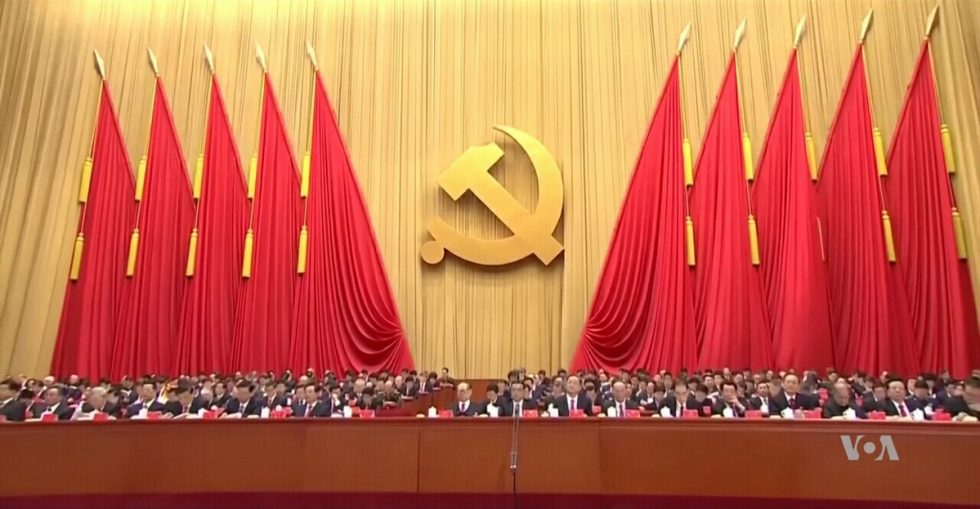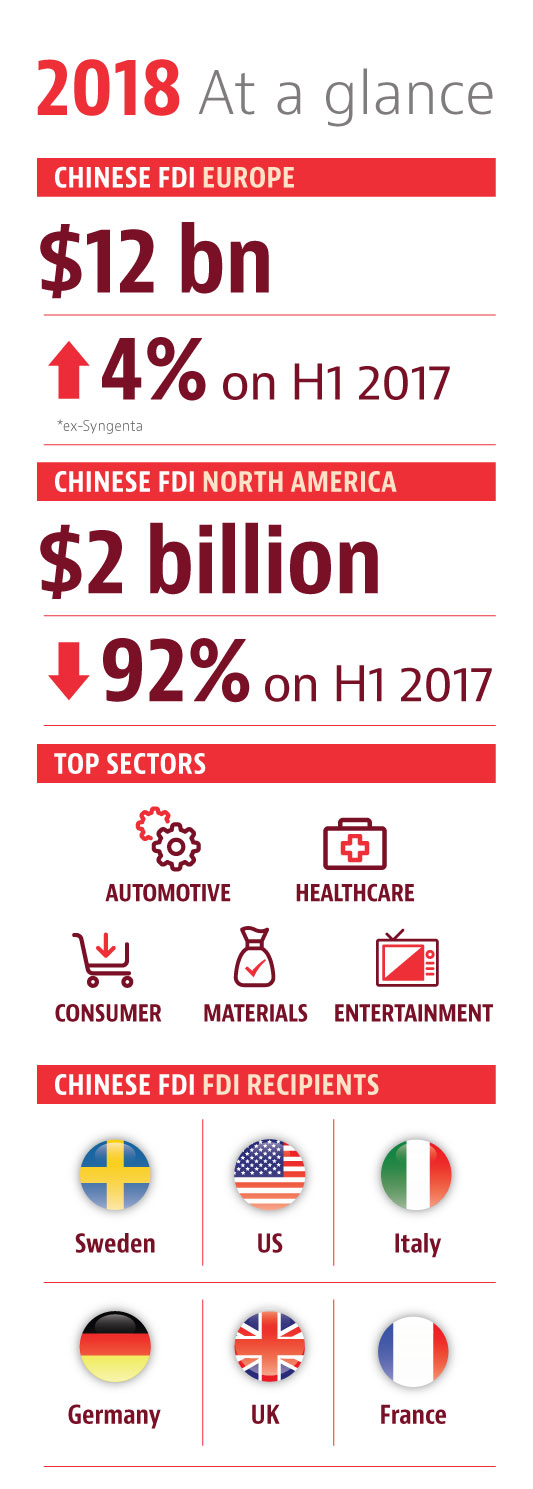New research from global law firm Baker McKenzie with leading independent research provider Rhodium Group reveals that Sweden is one of the top countries in Europe for Chinese investment ($3.6bn) was the largest European destination for Chinese investment in 1H 2018, followed by the UK ($1.6bn), Germany ($1.5bn), and France ($1.4bn).

Chinese outbound foreign direct investment (OFDI) has dramatically veered towards Europe over North America in the first six months of the 2018. The value in that period of newly announced Chinese M&A in Europe ($22bn) exceeded that in North America ($2.5bn) by a factor of nine, while the value of completed Chinese investments was six times higher in Europe ($12bn) than in North America ($2bn).
North America’s small 1H 2018 investment total continued a downtrend that started more than a year ago.Globally, the half-yearly value of newly announced global M&A activity by mainland Chinese companies has stabilised. It dropped from a peak of $145bn in 1H 2016 to an average of $70bn in 1H and 2H 2017. In 1H 2018 it reached $50bn – a further 32% drop compared to 2H 2017 but still significantly above the 6-month average of $39bn seen in 2013-2015.
Europe has also seen a drop in Chinese investment over the last year, but this decline came from a higher base and has been much less pronounced. Completed Chinese OFDI peaked in 1H 2017 (thanks to ChemChina’s $43bn Syngenta acquisition) before falling to $22bn in 2H 2017 and $12bn in 1H 2018. Excluding Syngenta, Chinese investment in 1H 2018 actually increased 4% year-on-year.
 The industry composition of Chinese investment has also shifted remarkably in 1H 2018 in both Europe and North America. “Real economy” sectors such as automotive, health and biotech, and consumer products and services became top recipients for Chinese FDI in both regions. The real estate and hospitality sector lost its top spot but still remained a sizeable attractor for Chinese capital.
The industry composition of Chinese investment has also shifted remarkably in 1H 2018 in both Europe and North America. “Real economy” sectors such as automotive, health and biotech, and consumer products and services became top recipients for Chinese FDI in both regions. The real estate and hospitality sector lost its top spot but still remained a sizeable attractor for Chinese capital.
Chinese companies have also divested assets at an unprecedented pace in North America so far in 2018, with several prominent investors during the 2015-2016 boom forced to sell holdings as part of a financial clean-up and tightening campaign back home in China.
“The scale and speed of the diverging trends revealed by these figures is remarkable,” said Thomas Gilles, Chair of Baker McKenzie’s EMEA-China Group. “At the same time, no-one should be surprised by the direction of travel – China is actively courting the EU with offers of reciprocal market access in an attempt to show foreign investment is not a one-way street, while trade relations with the US continue firmly on a downward path.”
”After five years of similar investment levels in Europe and North America, Chinese investors are now clearly favouring Europe,” said Thilo Hanemann, director of Rhodium Group’s cross-border investment practice. “Regulatory hurdles remain lower, political relations are more predictable, and Europe offers a great base if industrial high-tech assets, which is a good match with Chinese regulators’ outbound investment priorities.”
Baker McKenzie’s Washington, DC office commented that escalating Sino-US trade disputes are impacting Chinese investments in the United States.
“China plays a vital role in driving the global economy and its clear outbound investment is continuing at a more measured and sustainable pace, even if the geographic mix is changing,” said Danian Zhang, Chief Representative of Baker McKenzie’s Shanghai office. “What is important for Chinese investors is that the deals that do progress involve real economy sectors with sound business planning and objectives that can be operated in a safe business and regulatory environment. It is normal that there is a mix of buying and selling activities for outbound investment projects as corporate health after all requires acquiring as well as disposing of assets.”
After a period of calm, China is also facing a complex macroeconomic environment that may draw Beijing into a more interventionist stand on capital outflows. China’s currency depreciated significantly against the US dollar and other currencies in June, and officials are holding down interest rates to stimulate a slowing economy while relaxing liquidity controls moderately, states Baker McKenzie.
With tighter monetary policy and higher rates in the US and elsewhere, conditions are ripe for encouraging greater capital outflows and hence pressure on China’s balance of payments. Stiffer capital controls could well follow, making Chinese OFDI even more difficult despite the inextricable logic of corporate desire for a bigger footprint abroad.


One Comment on “Sweden top European destination for Chinese investment”